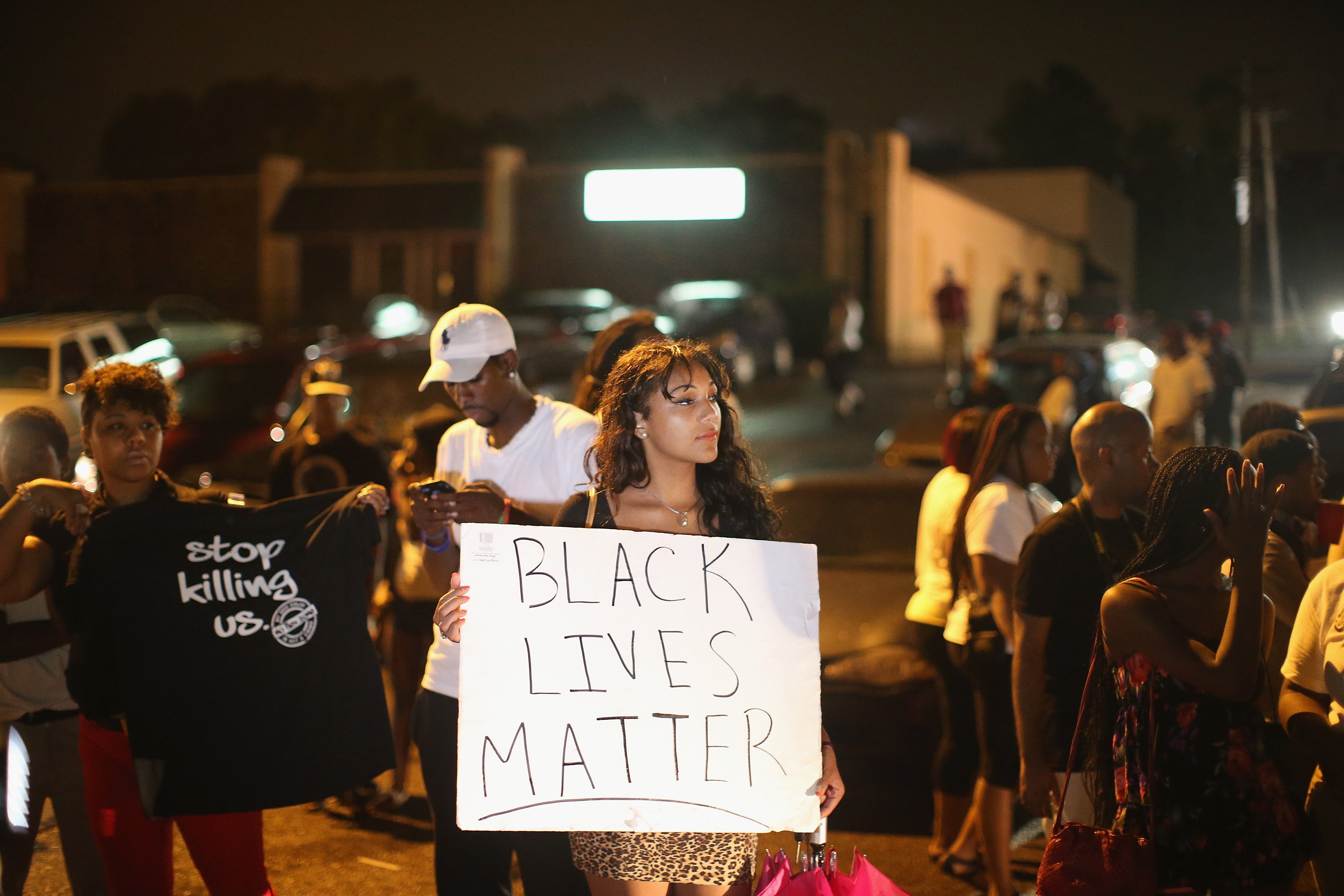 A young woman stands on a dark street with several people and holds a sign that reads 'Black Life Matters'. Photo: sayanythingblog.com
A young woman stands on a dark street with several people and holds a sign that reads 'Black Life Matters'. Photo: sayanythingblog.com
Modern Day Civil Rights Architects Take to Social Media
Youth organizers show solidarity and take action online
By Priscilla Ward
We cannot forget about Ferguson, Missouri. Despite the mainstream media’s coverage shift, the dialogue is still happening. Young people are continuing to respond in the killing of Michael Brown. Our lenses are being recalibrated as those under 25 claim their footing as modern-day civil rights architects. They are organizing largely via social media, galvanizing others to stage demonstrations across cities, on college campuses and in Ferguson, and helping to shift our lens on leadership. Historically, youth participation in larger political discourse has been disregarded, but the presence of social media amidst this discourse has allowed for the joining of efforts amongst organizations and individuals.
The reach of social media has created a forum where unfiltered opinions, responses, and tactics can be shared amongst everyone, from Gazans sending defense strategies to protesters on how to deal with tear gas via social media to Howard University students taking a photo in the “Hands Up, Don’t Shoot” stance that has come to be associated with Brown’s supporters.
Khalil Saadiq, 19, a sophomore at Howard, is responsible for organizing a demonstration in which over 250 students participated. He acts as the Student Advocacy Director of the Howard University Student Association, and was addressing volunteers preparing for freshman move-in. An image of the demonstration went viral after a photo was taken by fellow Howard student Ikenna Ikeotuonye.
“The goal of the photo was to help every student, feel as though they were part of making change happen. It happen on a much larger scale,” Saadiq said.
Powerful picture we took today at Howard University #Ferguson #MikeBrown #MyaWhite #DONTSHOOT pic.twitter.com/ttdVg33n5w
— Megan Sims (@The_Blackness48) August 14, 2014The chilling image received over 7,000 re-tweets.
“You could feel the spirit of Stokely Carmichael as students rushed to the middle of Crampton Auditorium, and not a single one opted out,” Saadiq said.
Saadiq explained his thoughts on the use of social media in the wake of Michael Brown’s death.
“The use of social media for activism does not change the fact that Michael Brown is dead. Its important that we first recognize this,” Saadiq said.
Keith Wallace, 22, staged Brown’s death in front of the LOVE statue in Philadelphia, one of the city’s most visited tourist attractions. Covered in blood, bullet holes, and even caution tape, Wallace lay down and stayed completely still for an hour.
While many people recognized Wallace’s demonstration as an act of protest, others saw it as a photo opportunity. These people illustrated how essential it is that sensitivity to this issue is preserved amidst the use of social media as a platform for conversation. For many, social media can be used as a tool to get on a “soapbox,” and provide commentary to social issues without direct action to the issue at hand.
Saadiq said that after posting the Howard photo to social media, celebrities began to post it next to photos of themselves in the “Hands Up, Don’t Shoot” stance. It’s important that organizing continues to happen beyond this, and social media is continued to be used as a productive means of organizing.
Countless youth advocacy organizations such as the Dream Defenders, a non-profit organization whose mission is to develop the next generation of radical leaders, realize and exercise our independent and collective power, building alternative systems and organizing to disrupt the structures that oppress our communities.
The Dream Defenders and other youth-led organizations are making it plain via their Twitter feeds that this can’t just be another poignant moment, but it necessitates a movement against unjust police militarization.
The Peace Economy Project, a Missouri-based non-profit organization staffed by persons in their early twenties, has largely been acting in a supportive role. Organizers are assisting one another’s efforts in some of the most tangible ways possible, through providing food and shelter.
“The two organizations largely on the ground that have been looking for guidance are the Organization for Black Struggle (OBS), and the Missourians Organizing for Reform and Empowerment (MORE),” said Jasmin Maurer, the Executive Director of the Peace Economy Project.
Maurer credits social media with providing a means for these materials to be accessible during protest in Ferguson.
“Events occurring around Ferguson have been developing at a rapid pace, and the ability of information to be shared instantaneously on social media has been vital. I turn to OBS and MORE, who have been alerting folks of actions on social media as they develop. In return, I can share these events just as fast through Twitter and Facebook,” Maurer said. The Peace Economy Project has also taken advantage of social media to put out information on police militarization and keep up on the news on the ground in Ferguson, Maurer said.
Young leaders are developing action plans, devoid of permission, or mainstream media’s attention to them. In Ferguson, non-profit organizations are collaborating, and shaping the culture around modern day civil rights organizing via social media.
Priscilla Ward
Priscilla, a Brooklyn based multimedia journalist keeping an active pulse on arts and entertainment culture. She is fascinated by use of social media, as a tool for organizing and leveraging important conversations.
Catch up with me @Macaronifro.

